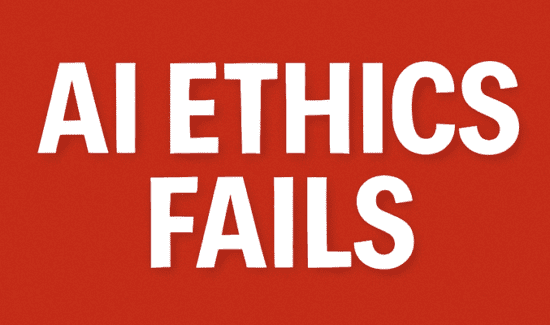The Core Human Skills Required for Success During the AI Boom

The Solutions Review and Insight Jam team has identified several core human skills required for success during (and after) the ongoing AI boom. These insights are informed by proprietary research gathered in collaboration with Skillify.
Artificial intelligence (AI) has long been a pillar of the technology landscape, but the current “AI Boom” we’re experiencing is something altogether new. With the rise of generative AI, alongside an ever-growing suite of AI enhancements, the competitive landscape for human talent has radically changed. While technical proficiency remains valuable, the most successful professionals in the AI era will excel in distinctly human capabilities that complement rather than compete with machine intelligence.
However, a recent survey of tech professionals—spanning executives (C-suite, vice presidents, and directors), mid-level managers, and individual contributors—reveals a potential disconnect between the need for core human skills and the time, training, and structure needed to develop those skills. The survey findings show that 94 percent of organizations claim soft skills are more critical than ever, yet employees report that they don’t have access to the coaching needed to invest in those skills. This mismatch creates a lack of urgency and puts individual professionals and teams at risk of falling behind.
With that in mind, we’ve compiled insights on some of the core human skills enterprise technology professionals and executives identified as particularly important in the industry. These skill sets likely represent the cornerstone competencies determining career trajectories and organizational success in the coming decades.
The Core Human Skills Enterprise Technology Professionals Need to Prioritize
Persistence
Paradoxically, the AI boom has made persistence more crucial than ever before. While artificial intelligence can process information at unprecedented speeds and solve complex problems with remarkable efficiency, it cannot navigate the extended timeline of human achievement that characterizes most meaningful endeavors. The professionals who thrive alongside AI systems are those who understand that the most valuable outcomes emerge from sustained effort over months and years, not minutes and hours.
Modern persistence also manifests differently from its pre-AI incarnation. Rather than grinding through repetitive tasks that machines now handle effortlessly, which AI can mercifully do on behalf of a human user, contemporary persistence involves focusing on strategic objectives while continuously adapting tactics based on AI-generated insights. This requires a psychological resilience that can withstand the cognitive dissonance of working with systems that appear to solve problems instantly while recognizing that genuine value creation still demands extended commitment.
The velocity of AI development itself demands a particular form of persistence. Professionals must maintain consistent learning trajectories in an environment where the technological landscape shifts monthly. This creates a unique challenge: the need to persist in skill development while remaining flexible enough to pivot when entire domains become automated. The individuals who master this balance demonstrate what might be called “adaptive persistence,” which is the ability to maintain unwavering commitment to outcomes while remaining tactically fluid. That means responding to and even accepting the inevitability of failure.
Failure is an integral part of the human learning experience, yet according to recent data, more than 25 percent of professionals report difficulties reframing their failures in that context. That percentage demonstrates a gap between valuing resilience and applying it in professional contexts. Wth AI capabilities still expanding, the premium on human persistence will increase rather than decrease, so it’s more valuable than ever for tech leaders to place additional emphasis on any and every potential learning experience.
Tolerance of Ambiguity
Artificial intelligence systems excel in environments with clear parameters and defined success metrics but struggle when faced with ambiguous objectives, contradictory information, or situations requiring comfort with uncertainty. That limitation creates an opportunity for humans to operate effectively in ambiguous environments, especially if they can combine their human expertise with the additional resources AI systems provide.
75 percent of tech leaders say tolerance for ambiguity is critical, yet 37 percent struggle to make decisions in uncertain situations.
The tolerance of ambiguity demanded by the AI era extends beyond traditional comfort with uncertainty. Most pressingly, modern professionals must navigate the meta-ambiguity of determining which aspects of their work should be delegated to AI systems and which require human judgment. This requires developing intuitive frameworks for distinguishing between problems that benefit from computational approaches and those that require human cognitive flexibility.
The strategic value of ambiguity tolerance becomes especially apparent when considering the nature of emerging business opportunities. The most valuable market positions in the AI era will likely exist at the intersection of multiple technological capabilities, regulatory environments, and consumer preferences. However, identifying and capitalizing on these opportunities requires professionals who can maintain strategic clarity while simultaneously operating with incomplete information across multiple domains.
Ultimately, those who develop superior ambiguity tolerance will find themselves in roles that bridge the gap between AI capabilities and human strategic decision-making. These positions will likely command premium compensation as organizations recognize the irreplaceable value of human judgment in uncertain environments.
Empathy
There’s always been a premium on empathy, but rapid AI adoption has made it more essential than ever. With AI handling more and more routine interactions, the human touchpoints left over will, understanding, become valuable. However, the empathy required for success in the AI era extends far beyond traditional emotional intelligence and encompasses an understanding of the psychological dynamics of human-AI collaboration.
For context, the recent “AI Won’t Replace You—But Lack of Soft Skills Might” report found that nearly 30 percent of respondents claimed that their perspective is generally best. While self-confidence is another core human skill worth prioritizing, it must be balanced with the ability to empathetically engage with and adopt other perspectives, as failing to do so will limit collaboration and forward momentum.
There’s another angle to empathy, too: the technical dimension. This involves using empathy in AI-integrated environments to understand how individuals process and respond to machine-generated recommendations. Some people highly trust AI outputs, while others maintain persistent skepticism, and effective collaboration requires recognizing these differences and adapting communication strategies accordingly. This meta-empathy for human-AI interaction patterns represents an entirely new category of interpersonal skill.
Empathy also becomes crucial for designing AI implementations that account for human psychological needs. The most successful AI deployments will be those that consider not just functional requirements but also the emotional experience of users who integrate artificial intelligence into their daily workflows. This requires professionals who can bridge the gap between technical capabilities and human psychological realities.
Humility
Practitioners who maintain traditional expert mindsets—assuming their domain knowledge provides a comprehensive understanding—will find themselves increasingly disadvantaged compared to those who develop what might be called “AI-augmented humility,” which is best summized as being the recognition that human expertise becomes most valuable when combined with artificial intelligence capabilities rather than positioned against them.
This form of humility involves acknowledging the limitations of human cognitive processing while also recognizing the irreplaceable value of human judgment in contexts requiring wisdom, ethical reasoning, and long-term strategic thinking. While 81 percent of tech leaders say humility (seeking and using feedback) is essential to their business, 46 percent say they receive vague or non-actionable feedback, which inhibits their ability to practice humility and empathy. As such, the most successful professionals will be those who possess the humility required to receive and apply feedback and those in environments that provide that feedback: you can’t have one without the other.
The strategic value of humility extends to understanding the limitations of current AI systems. While artificial intelligence demonstrates remarkable capabilities in many domains, it also exhibits consistent weaknesses that create opportunities for human contribution. Professionals who can accurately assess these limitations while avoiding both AI skepticism and AI over-reliance will be best positioned to create value in hybrid human-AI environments.
Relationship-Building
Contemporary relationship-building in the technology marketplace requires understanding how different individuals and organizations can adapt to AI integration. As such, this means recognizing that AI adoption patterns vary significantly across industries, roles, and personality types. The most effective relationship-builders will be those who can assess these differences and adapt their interaction strategies accordingly. This might involve understanding whether a potential collaborator views AI as a threat or opportunity, how they prefer to receive AI-generated insights, or their concerns about human-AI collaboration.
The technical dimension of relationship-building has also shifted in the AI era. While many tech professionals prefer working alone, more than 80 percent acknowledge the continued importance of relationship-building skills. However, translating traditional relationship development to scenarios like AI implementation can be challenging, as it requires teams to quickly establish trust and rapport with individuals experiencing rapid changes in their work environments due to AI implementation. These accelerated relationship-building skills can create meaningful connections despite the psychological disruption often accompanying technological change.
If we want to speculate on the future, relationship-building seems situated to become increasingly specialized as AI capabilities expand. Rather than general networking skills, professionals will need to develop specific relationship-building competencies for different AI-integration contexts. This might include relationships with AI developers, relationships with individuals in AI-resistant industries, relationships with early adopters of emerging AI technologies, and relationships with executives or decision-makers.
Of course, the most effective professionals across contexts will be those who use AI tools to enhance their relationship-building capabilities while investing their time in building relationships with their peers. The combination of both will create lasting professional bonds.
Take the Next Step: Help Shape the Future of AI-Ready Workforces
The best technologists of the future will not simply know how to build, prompt, or deploy AI. They’ll learn how to work with others, weather change, and see the bigger picture. Human-centered skills are the foundation of that future, and the time to start building them—systematically, strategically, and sincerely—is now.
To that end, the Solutions Review and Insight Jam teams are conducting a follow-up study to deepen our understanding of the human-AI skills gap, and we need your input.
Note: These insights were informed through web research and generative AI tools. Solutions Review editors use a multi-prompt approach and model overlay to optimize content for relevance and utility.




